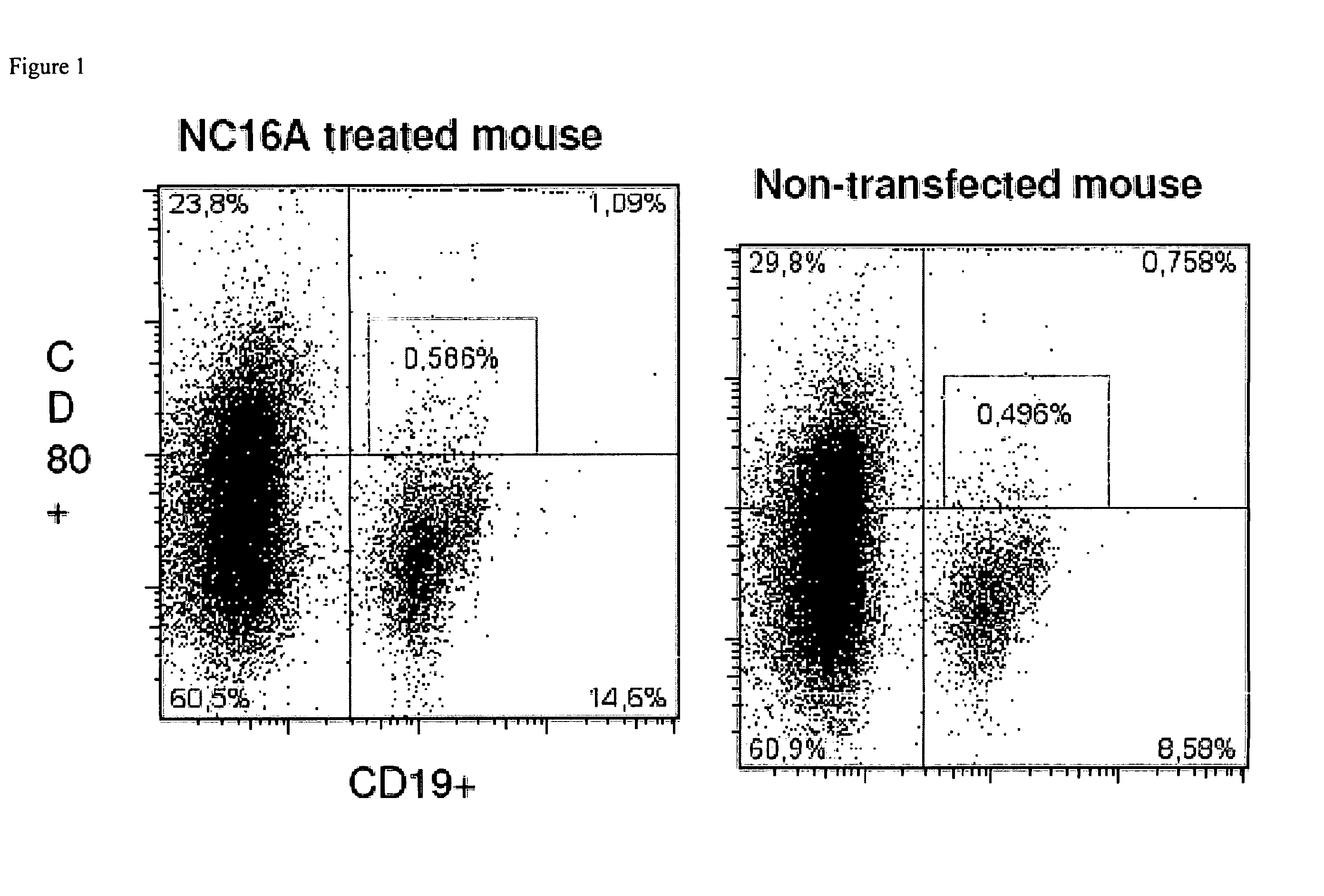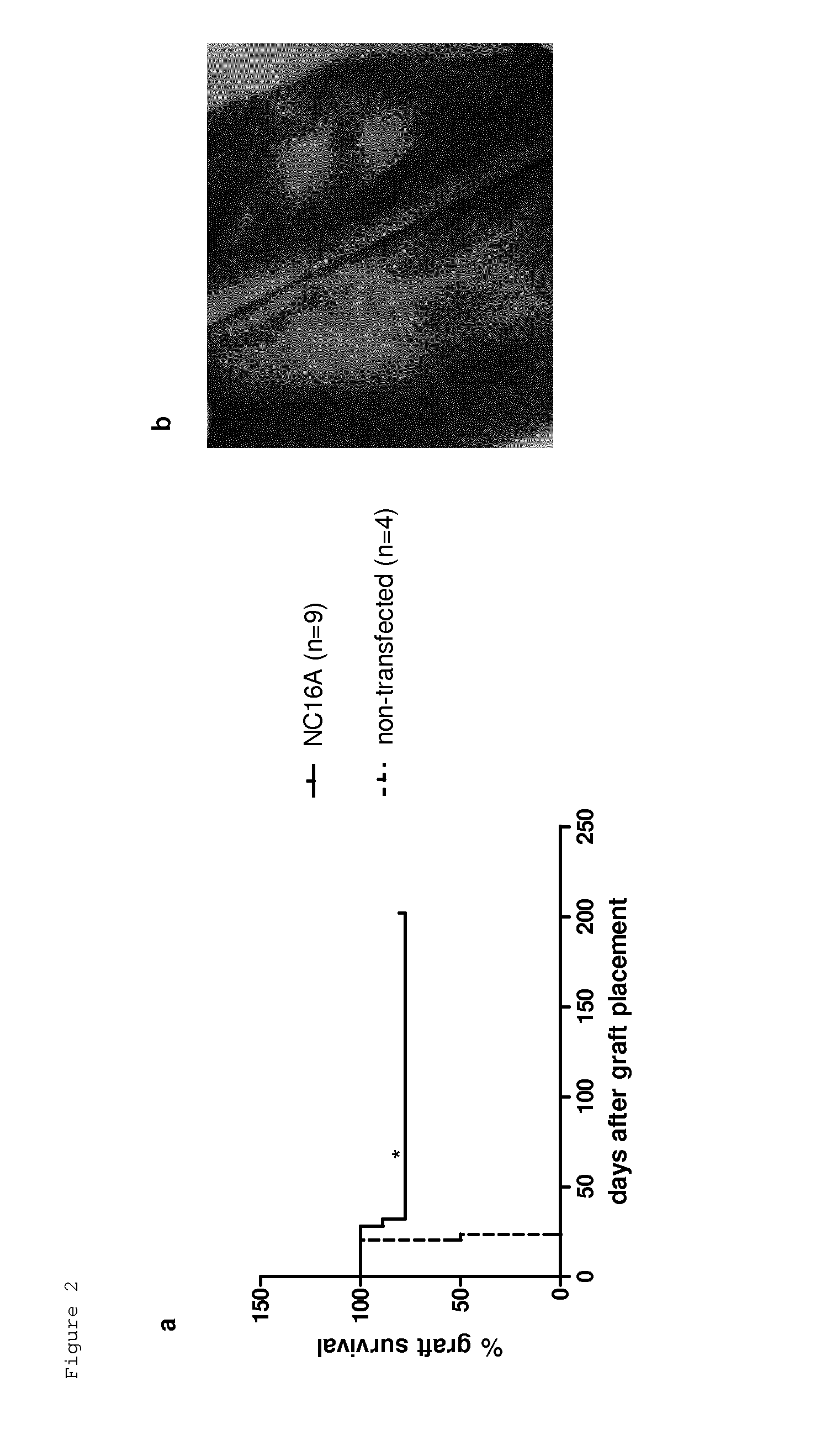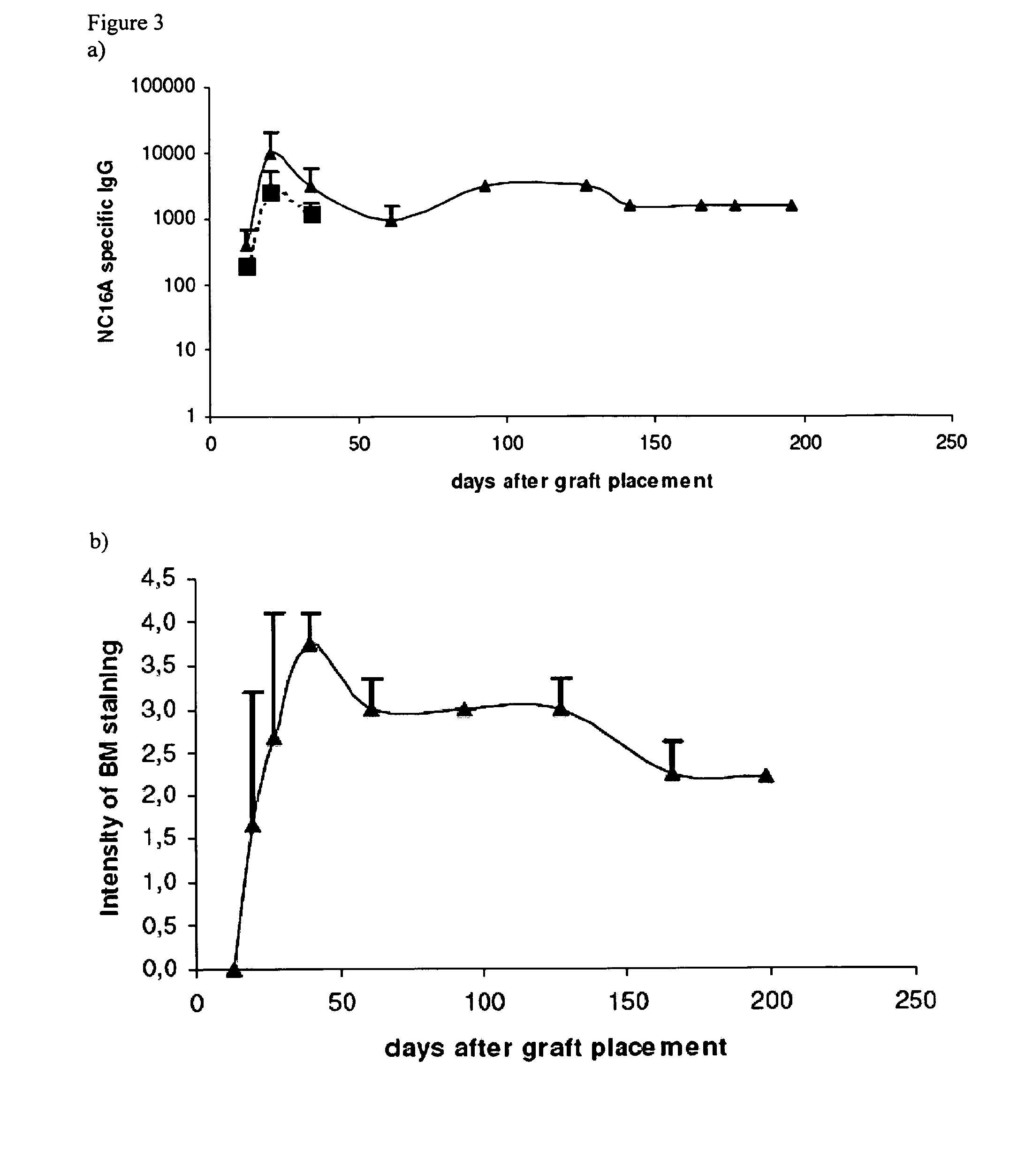Use of epitopes inducing specific tolerance for the prevention of tissue rejection
a technology of epitopes and specific tolerance, which is applied in the direction of antibody medical ingredients, peptides/protein ingredients, peptides, etc., can solve the problems of loss of tolerance induction, high risk of gene therapy-treated tissue rejection, and potential serious complications of immune responses to a therapeutic gene produ
- Summary
- Abstract
- Description
- Claims
- Application Information
AI Technical Summary
Benefits of technology
Problems solved by technology
Method used
Image
Examples
Embodiment Construction
[0044]Materials and methods
[0045]Mice. C57BL / 6 hBPAG2 tg (Tg) mice, expressing hBPAG2 in the basal membrane (BM) of the skin (hBPAG2 Tg) were obtained by Kim Yancey, Southwestern Medical School at Dallas, Tex., USA). Female BALB / c and C57BL / 6 mice (8-10 wk old) were purchased from Charles River Laboratories (Sulzfeld, Germany). Mice were housed under SPF conditions in the animal facility at the University of Salzburg and at the Paracelsus Medical University Salzburg, Austria according to the institutional and national guidelines for animal care and use. All experiments described in this study were approved by the Austrian Federal Ministry for Science and Research Austria.
[0046]Design of construct. NC16A was amplified from cDNA of human keratinocytes using primers specific for NC16A (Genebank accession number NM—000494, primer sequence fwd: 5′ tagaggaggtgaggaagctgaagg 3′ (SEQ ID No. 1), rev: 5′ tcatcggagatttccattttcctgttccatc 3′ (SEQ ID No. 2) inserting a stop codon). The inventors t...
PUM
| Property | Measurement | Unit |
|---|---|---|
| diameter | aaaaa | aaaaa |
| pressure | aaaaa | aaaaa |
| temperature | aaaaa | aaaaa |
Abstract
Description
Claims
Application Information
 Login to View More
Login to View More - R&D
- Intellectual Property
- Life Sciences
- Materials
- Tech Scout
- Unparalleled Data Quality
- Higher Quality Content
- 60% Fewer Hallucinations
Browse by: Latest US Patents, China's latest patents, Technical Efficacy Thesaurus, Application Domain, Technology Topic, Popular Technical Reports.
© 2025 PatSnap. All rights reserved.Legal|Privacy policy|Modern Slavery Act Transparency Statement|Sitemap|About US| Contact US: help@patsnap.com



